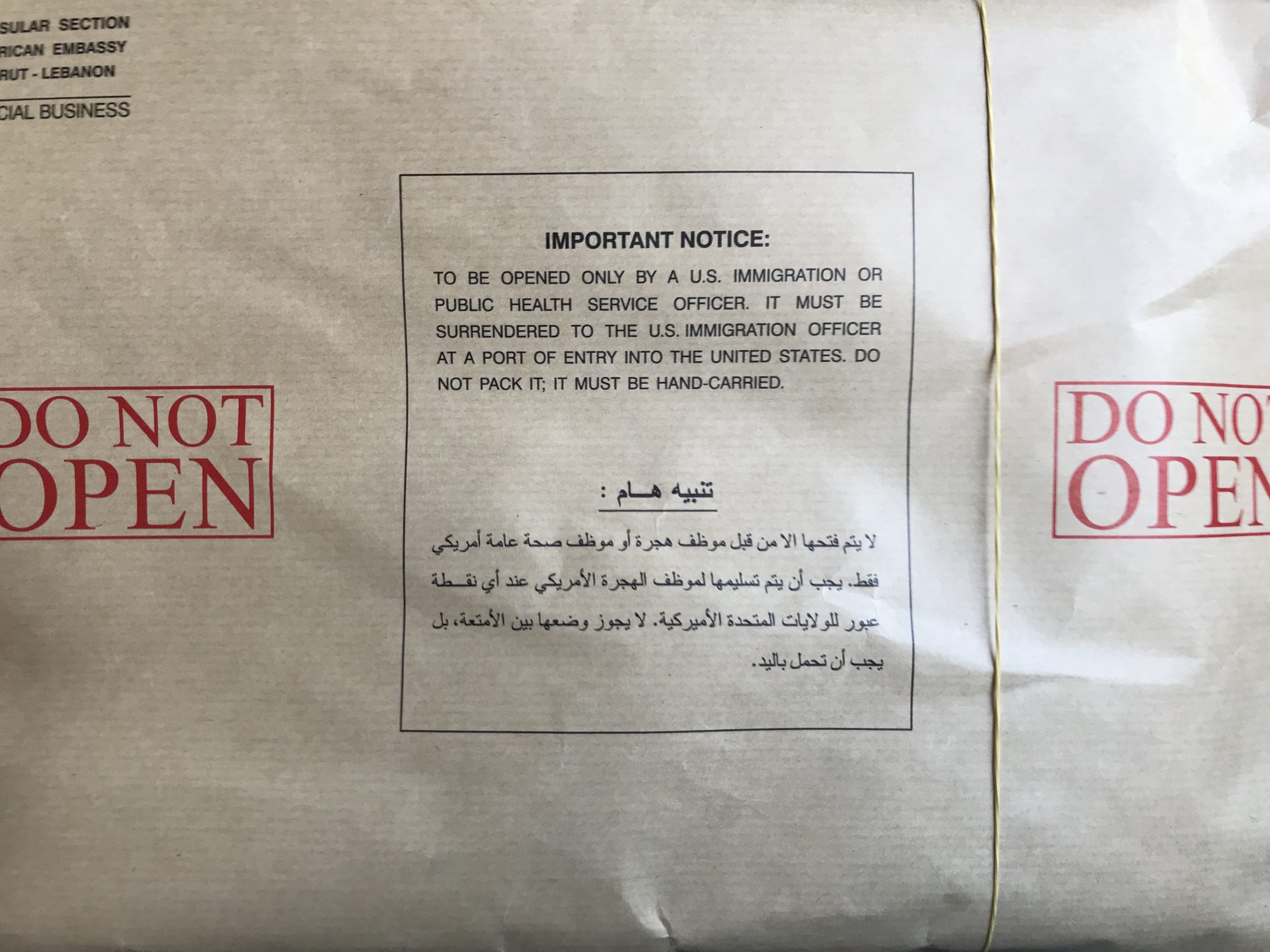Knowing thyself can serve a practical purpose as well; it’s a shorthand that short-circuits the rookie writer’s evergreen anxiety: how to tell a story that is not a long series of introductions introducing more introductions. I-dentity draws the “I”—a line in the sand—and brings the point to focus. I am traveling with another; this is my story.
And yet, as with all quick-fixes, identity begs more questions than it answers. Where exactly is the starting line? At a recent staff retreat, I came ill-prepared to a team-building session with a scrapbook as my story-prompt that I planned to turn into a wink at the managerialism—that meta-narrative of optimization—behind the scenes, saying: “this is me, a closed book.” But as I sat there and listened to others take their turns, I noticed how many framed their stories with an “I” that began way, way before their birth—with parents and grandparents and great-grandparents—and so I felt compelled start my story at the year 300 A.D., give or take a century or two. Because, like my ancestors, I am still traveling, and that was a good story of being ever the stranger in town.
But there are other ways to introduce oneself. In my recent readings, I’ve come across the term “heirohistory” for the nonlinear timeline of inner transformation that most mystics have tended to prefer as their mode of autobiography—a preference borne out of a sometimes explicit dualism pitting “true” esoteric history against the mere semblance of time as seen through fleeting external events. But the concept needn’t be dichotomized in that way to be useful.
Our intellectual & spiritual biographies as “heirohistories” would be more granular than where we studied & what we did or did not do on religious holidays. They’d drill down to the very grammar of the narrative—down to the dualisms & dichotomies, in fact, & to the antinomies & antagonisms that congeal & ossify into “identity.”
I am traveling with an-other: my sense of what is not-I. That is the primal duality. Sometimes the I and the Not-I break apart into mere dichotomy; other times, we form the foundations of harmony.
To know myself is to move past introductions—to move past the self into the transpersonal. It’s like discerning the span between the hierophant and the lovers.
And so, to know myself is to participate in the world. There’s no dichotomy implied here; I am in the world and the world is in me. “Every whole is an integral part of a greater whole…All fixed frames of reference are for the purpose of intellectual analysis only.”
Dane Rudhyar wrote those words when introducing his dynamic model of astrology, reminding modern practitioners that charts are snapshots of “successive positions of a moving object” & urging more attention to the movements themselves—to cycles of relationship, such as that of the sun & the moon (soli-lunar cycle). But he does this within a broader metaphysic that honors primal difference in ways that some mystical discourse, in its rush towards union & unity, does not.
For Rudhyar, wholeness emerges from the ‘Two-in-One’: “There must be two ‘Lights’—one steady, the other constantly changing. There must be dualism—but simply because a third factor requires that there be these two ‘Lights’ & the alternative current produced by their relationship…Any relationship which would not be for the purpose of fulfilling the need of some third factor would have no meaning at all.”
Now, a lot of this theorization is tautological; the astrologer draws metaphors of the sun & the moon out of metaphors of man & woman, then turns around & draws metaphors for humankind back down from the heavens. Dane Rudhyar may be making too much of two lights because his gender politics needs work. But what’s interesting about this particular interpretation is what it says about the difference between duality & dichotomy: we require two lights—this & that, you & me, binary & non-binary—because reality is triad and we are always a part of it.
The power of discriminating between one thing and another is part & parcel of the work of discerning how we’re all three connected. It only becomes discriminatory in the negative sense when I freeze-frame and thus split the two lights apart.
Understanding ourselves is being intentional partners in these triads—it’s a start, but it’s what insures that the Two-in-One equals Three. We contemplate that work by looking at visible signs in the sky; we also meditate on our inner dualisms—mind & body, self & world—remembering that these only have non-dichotomous meaning when oriented towards a third.
I suspect that that’s what Rowan Williams has in mind when he talks about story. In his talk about fiction and the ways that novels reveal “the fragility & the oddity of human identity,” Williams singles out the story of a man who chose a life of non-identity—a Holy Fool or yuródivyy (юродивый), “somebody who abandons all notion of respectability & success, who lives a life which is, to all outward appearances, stupid, outrageous & unconventional, but is, in its stupidity & outrageousness, a kind of selflessness.”
A bold move for a TEDx talk. Williams argues that “this reinventing of a [foolish] self that’s not defensive, aggressive & anxious, is actually a flowering, a maturing at the same time.” He then goes on to ask this of us in general:
“Do we exercise that [self-narrating] power in creating the safe, the impressive, the successful version of ourselves, or do we, like Arseny in this remarkable book, go on reinventing ourselves not as the giants and heroes and saints we’d like to be, but as those willing to give more & more space for the life of others to come alive in us or around us?”
Knowing thyself inherently means moving past thyself & making room for thou. All these disparate parts, all these bodies in motion—they are elements in need of alchemy.
We are made for relatedness that begins where X marks the spot.
